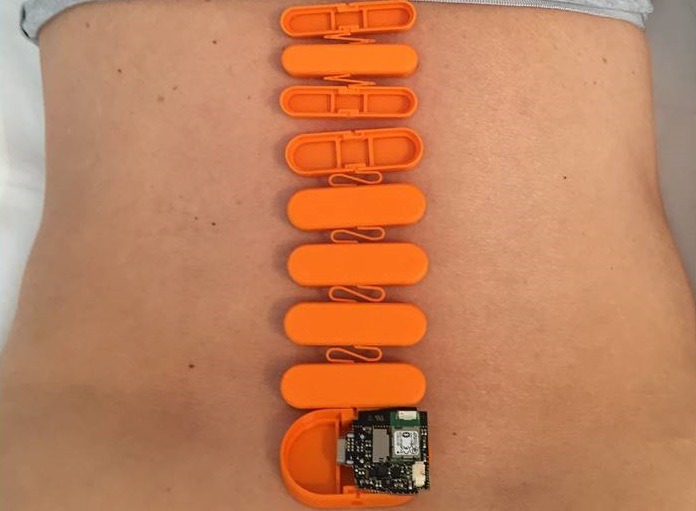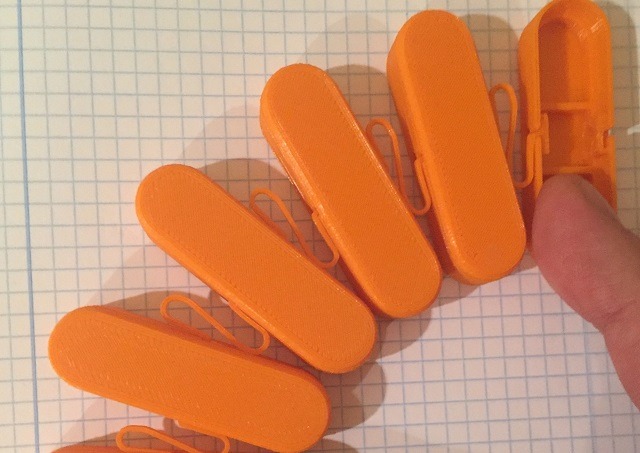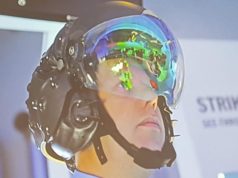
The lumbar spine is the site of over 20% of injuries in Olympic sport, according to the British Association of Sport and Exercise Medicine. These high impact injuries can cause enormous trauma to the spine, in a group whose physical fitness is paramount. Assessing movement can be an important tool in understanding the nature of these injuries and in aiding treatment and rehabilitation. New developments in wearable technology may offer clinicians the opportunity to comprehensively and unobtrusively measure the movement of the entire spine in both athletes and the general patient population.
Three-dimensional measures of movement have traditionally involved cameras and goniometers. Often found behind the scenes of Hollywood films, cameras can register the movement of dots attached to certain parts of the body.
Goniometers, on the other hand, can be found in the offices of spinal specialists across the globe in the form of scoliometers.
Hi-tech cameras are expensive and cumbersome, while goniometers are limited in scope and famously fallible. Neither is suited for the tracking of everyday movements outside of the clinic.
Martin Gossling, chief executive officer of 270 Vision, is developing wearable technology for tracking the spine outside of the clinic setting. Presenting his company’s research and development efforts so far at the NSpine Main Conference, he explained how meaningful 3D kinetic data gathered at the site of injury could benefit clinicians treating sporting injuries.
The movement of the spine is not regularly scrutinised
At the moment, certain movements are regularly tracked in professional athletes. For example, the hypermobility of ballet dancers and the knees and ankles of footballers are often analysed. The spine, however, is not scrutinised in this way in spite of being the site of so many sports-related injuries.
Useful spinal measurements, Gossling explained, would include twist, sway and balance for the entire global spine and the ability to analyse particular vertebrae. Scoliosis, lordosis, kyphosis and Cobb angle measures would all be paramount to a spinal system.

Gossling and his team are developing a wearable system to map the spine, across all levels in the sagittal, axial and coronal planes based on their orthopaedic measurement system, BPMpro (BPMpathway).
Using high-performance accelerometers to map relative to the vertical plane, gyroscopes to measure 3D movement and precision magnetometers to track the degree of twist—all in three axes—precise measurement of movement should be possible to less than 0.1 of a degree. In addition, the system’s sensors can yield impact analysis sensitive to 0.1g, scanning at over 1,000 times per second.
A single sensor can map the movement of the cervical spine
A single sensor positioned on the side of the head can map the movement of the cervical spine, feeding back degrees of motion in terms of flexion, extension and left/right rotation. Measuring the spine from the T1 down to the sacrum, however, requires more extensive equipment.

270 Vision has used a series of 3D-printed springs to mimic the height and movement of each disc, taking into account the different requirements of the thoracic and lumbar spine.
The positioning of the springs can “provide association between segments and lateral support” to produce a self-supporting mechanical representation of the spine, and to replicate the mechanical action of the disc material—even adjusting the stiffness to take into account the disc ageing process. Nestled in each segment is an electronic measurement array to track the movement of the model and, thus—when in position on the body—the spine itself.
For athletes, the model could be placed directly on the back so as to avoid any restriction in movement. The initial feedback from elite sport is to focus primarily on the lumbar spine rather than a global spinal model. For patient use, however, the team are working on producing a modified brace incorporating the technology, as well as a simplified model for use in spinal pathways, supporting patients recovering from spinal surgery at home.
The technology is currently making its way through the UK patent application process, as well as incorporating elements of 270 Vision’s granted patent on the assessment of human movement using motion sensors. The company is seeking to protect the innovative design of the connected segments and their ability to respond to the movements of each other.
Next year, the system is due to be tested on a group of over 25 elite athletes, focusing on the lumbar spine, as well as a group of more than 12 professional ballet dancers to map hypermobility. In addition, the system will be tested on a large cohort of patients by rehabilitation provider, Blatchford.













